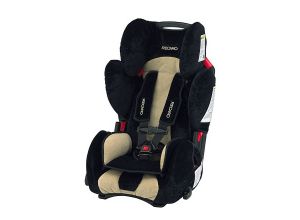Car Seat Safety

IS YOUR CHILD SAFE WHILE YOU ARE DRIVING?
Why Should I Use A Car Seat?
The law in all 50 states, DC, PR and the US Territories says that babies and children must ride in child safety seats until they are old enough to wear safety belts.
Motor vehicle crashes are a leading cause of death for children ages 1-5 in the United States and correct use of car seats could save many children’s lives.
In a crash or sudden stop, an unbuckled adult holding a baby can crush the child into the windshield or dashboard.
In a 30-MPH crash, a 10-pound baby could be ripped from a belted adult’s arms with a force of almost 200 pounds, and hurled into the dashboard or windshield. No one is strong enough to hold onto a child in a crash like that.
When Should I Use A Car Seat?
Use a car seat EVERY TIME, on EVERY TRIP!
Do not make the deadly mistake of using a car seat only on freeways or for long trips. Most car crashes happen within 25 miles of home.
If a child rides with friends, relatives, or babysitters, be sure they have a correctly installed safety seat and that they use it every time the child is in the car.
What Kind of Car Seat Should I Use?
Infants up to 20 pounds should ride facing the rear of the vehicle in infant-only or convertible safety seats (seats that convert from rear-facing for infants to forward-facing for toddlers).
Children weighing about 20 to 40 pounds should ride facing forward in convertible safety seats or harness systems.
Children who have outgrown their convertible seats for harness should ride in booster seats until adult belts fit them properly.
Never allow children to place the shoulder part of the belt under their arms.
Booster seats may be either the small shield or belt-positioning type.
Older children may wear vehicle safety belts when the lap belt stays low and snug across the hips without riding up over the stomach, and the shoulder belt does not cross the face or front of the neck.
Children with special needs, such as those who are physically challenged, may need special child safety restraints. Check with your child’s doctor, therapist, or local Easter Seal Society “KARS/Special KARS” program to find out where you can get special restraints.
An approved child safety seat has a label that says: “This child restraint system conforms to all applicable Federal Motor Vehicle Safety Standards. “This label is usually on the back of the seat.
If you plan to use the safety seat on airplanes, the label should also read, “This restraint is certified for use in motor vehicles and aircraft.”
Where Should I Put the Car Seat?
Do Not place any rear-facing safety seat in the front seat of a vehicle with a passenger-side airbag. A passenger-side airbag could strike the back of the safety seat with a force that could seriously injure your baby.
The back seat is the safest place for any child safety seat.
Never let children ride in the bed of a truck, or sleep or play in the rear of a station wagon without proper restraint. In a crash, they can be thrown out of the vehicle.
How Should I Install The Car Seat?
Install your car seat very carefully. Read your car seat instructions an your vehicle owner’s manual, and follow the directions word for word.
You may need a special locking clip to hold your vehicle safety belts in place so you can anchor your safety seat properly.
Check your vehicle owner’s manual to find out if you need a locking clip, which should be available from your car dealer or child seat manufacturer.
Note: A larger locking clip (also known as a “heavy-duty” locking clip) with a special part number may be required for you to install a safety seat correctly in some vehicles. Check your vehicle owner’s manual to make sure you are using the correct locking clip.
If your car has door-mounted safety belts, you will need to have your car dealer install a special adapter belt to use with your child’s safety seat. Again, check your vehicle owner’s manual to be sure.
Other Precautions
Make sure you position the car seat harness straps and clips correctly for the size of your child. Many seats offer a choice of strap positions.
Never use a household baby carrier in place of a safety seat.
Never use a household booster seat, pillows, or telephone books to boost a child in a vehicle.
In an emergency, any kind of restraint is better than no restraint.
If your child safety seat has been involved in a crash, you must replace it, even if it looks like it is in good condition. Hidden crash damage can severely weaken a car seat.
Be sure you get a copy of the instructions for the exact seat you own. Your State Highway Safety Office or local public library can help you get the manufacturer’s address if you can’t find it anywhere else.
Complete and return the registration card that comes with your new car seat. This will allow the manufacturer to contact you in the case of a safety recall.
Provided by the Governor’s Office of Highway Safety